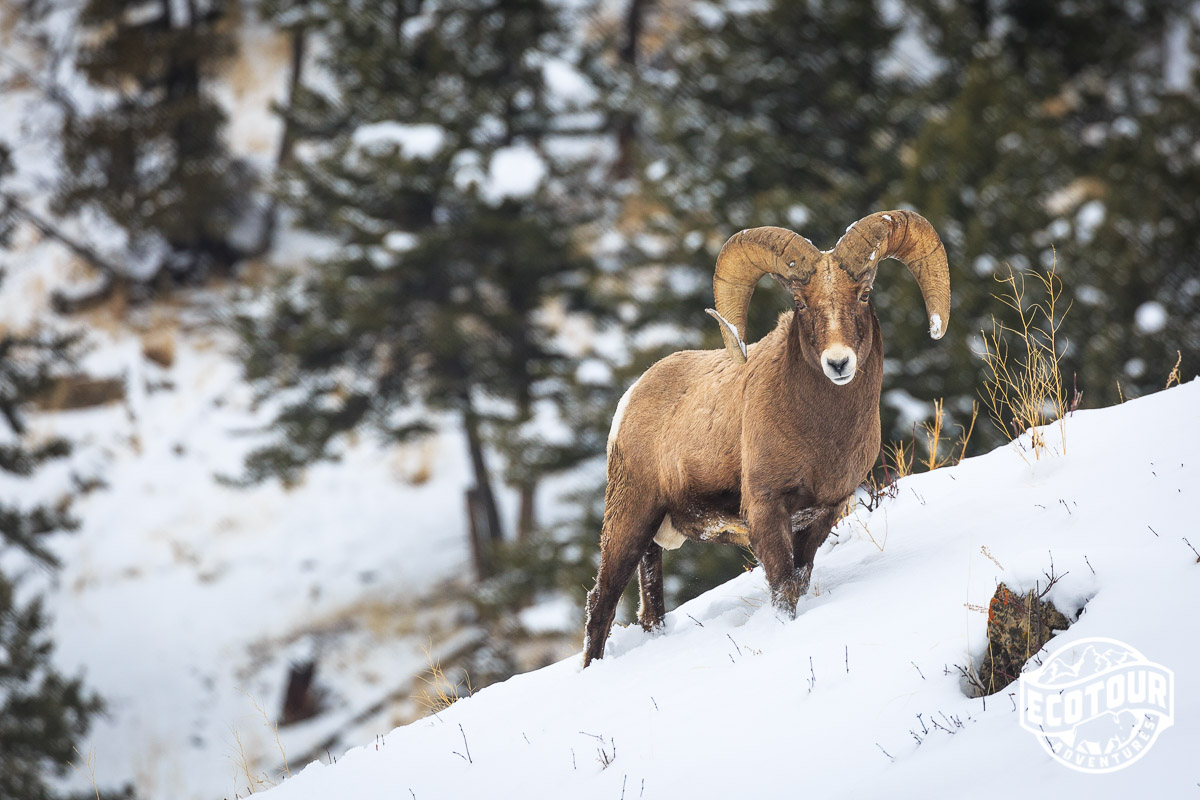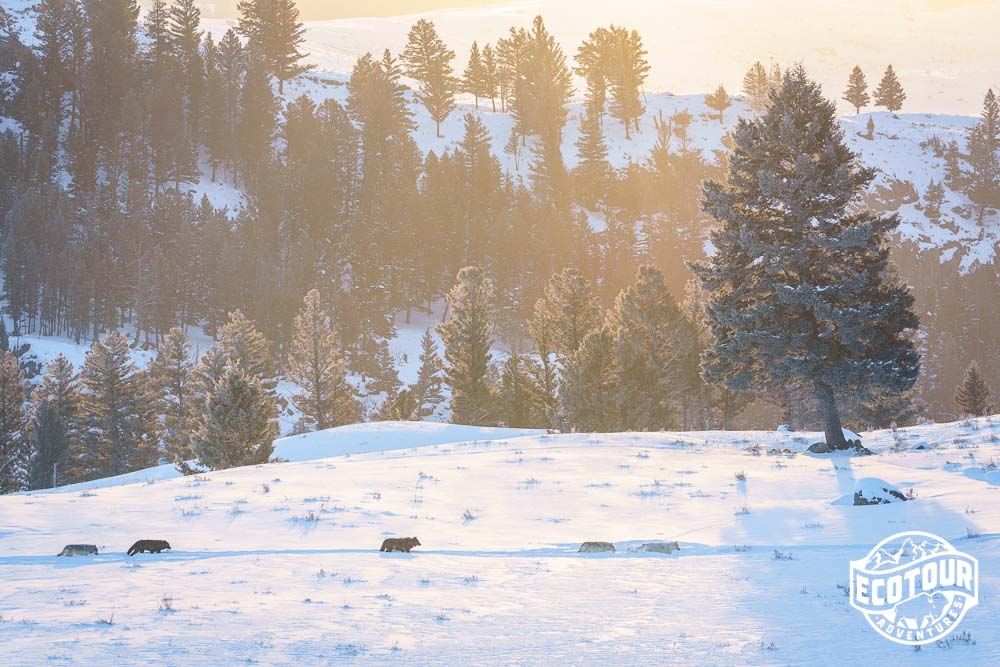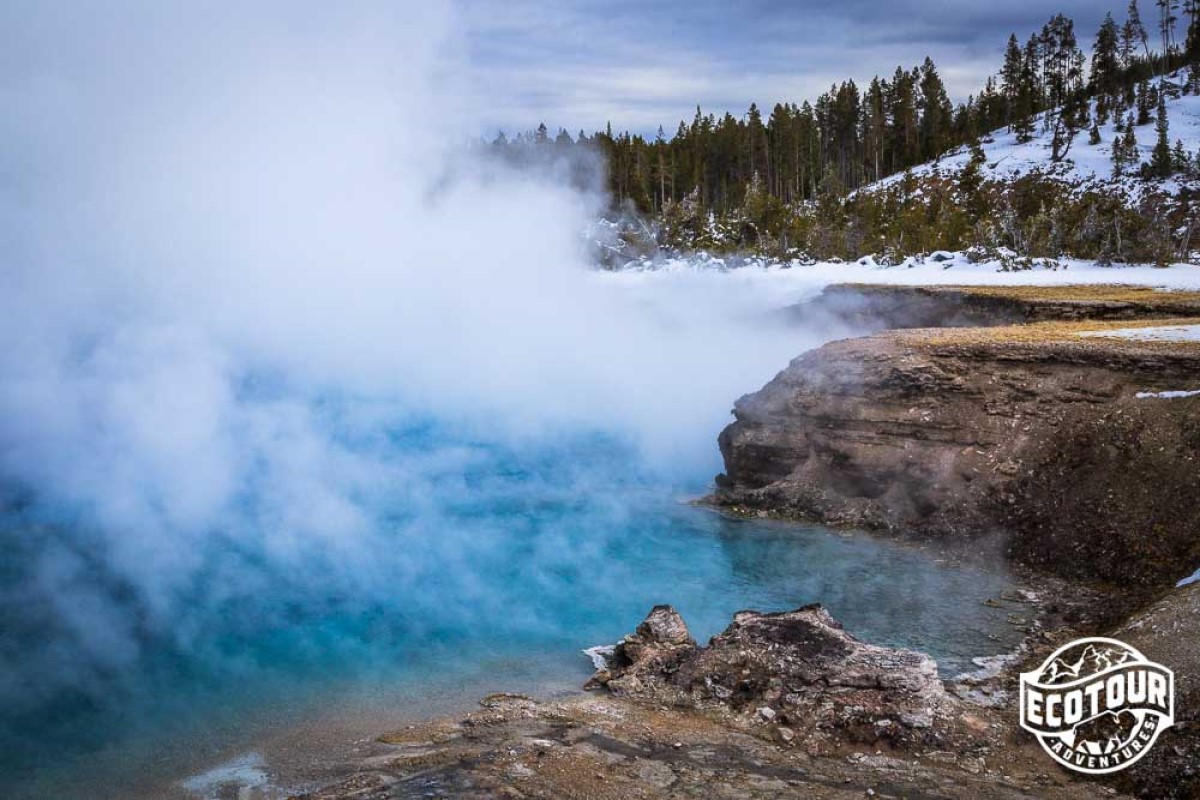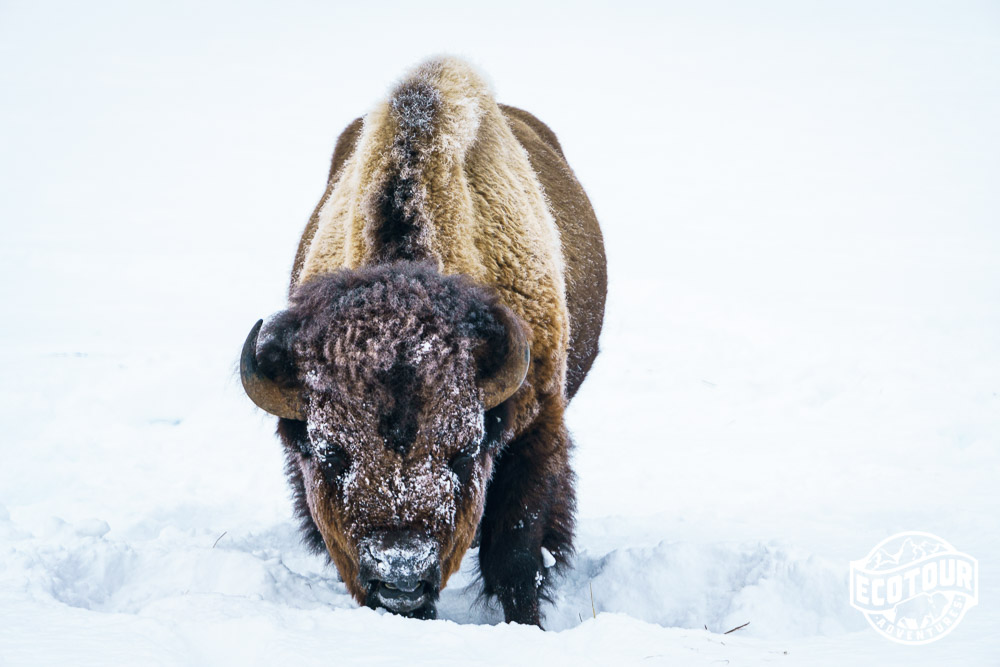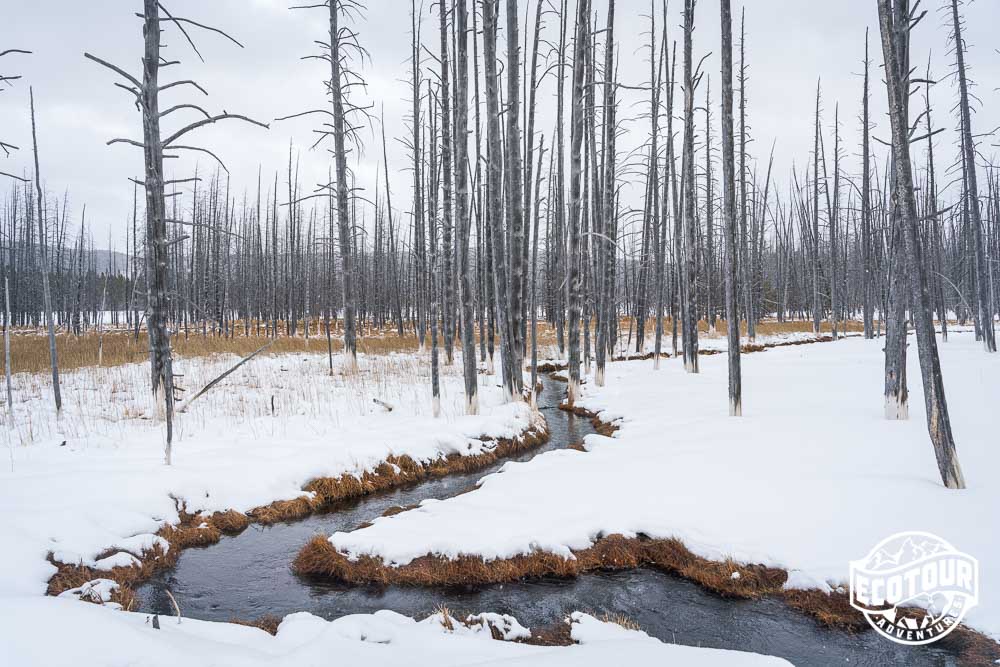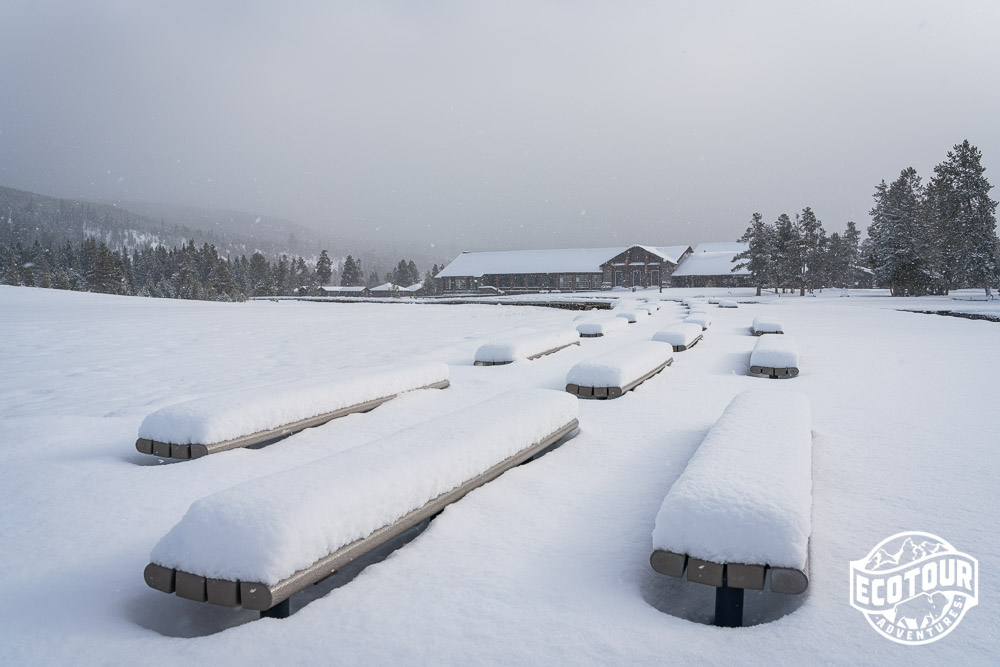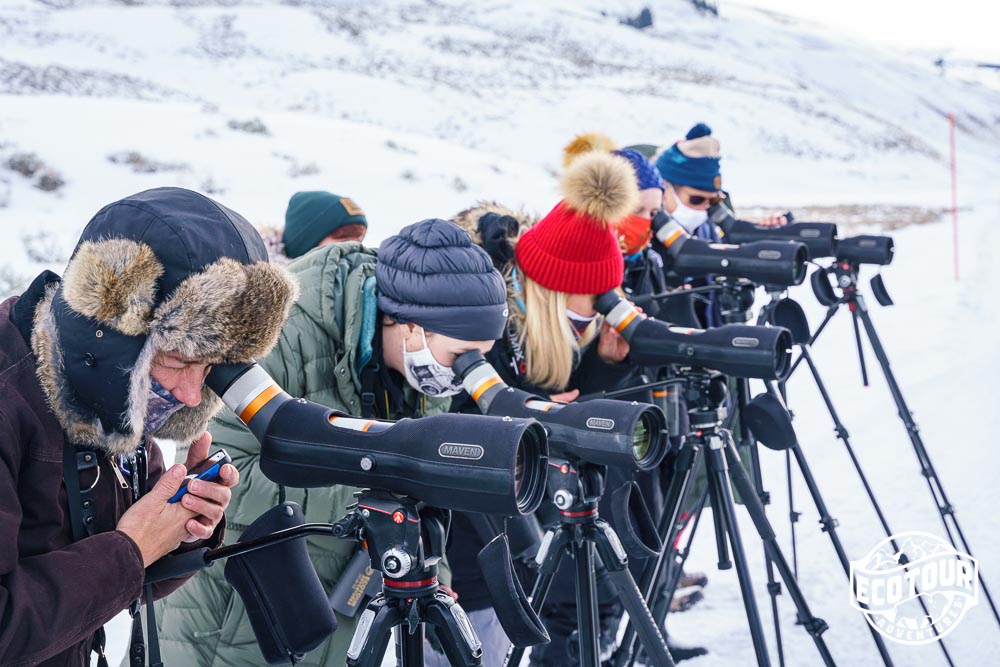Why Winter is the Best Time of Year to Watch Wolves in Yellowstone National Park
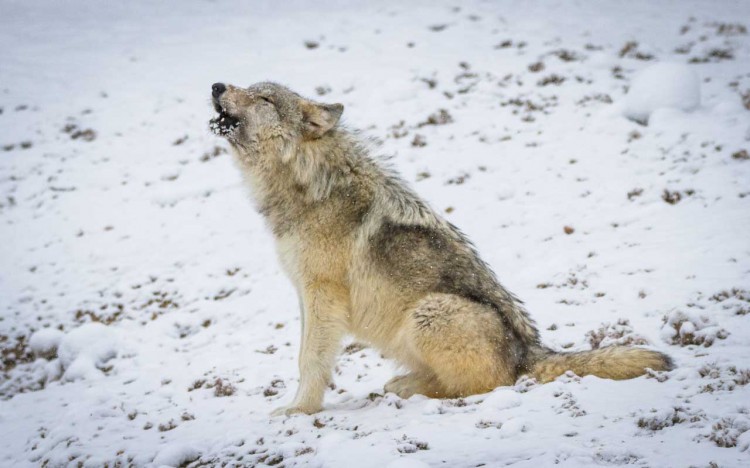
Where is the best place to see wolves?
Winter in Yellowstone National Park!
Wolves are visible near Elk Creek! We pull in to a snowy parking area and excitedly hike up a small hill for a better look. Across the drainage at about 600 yards, 15 wolves lie sleeping in the morning sun, it's the Wapiti Lake Pack. We set up spotting scopes to get a closer look when a howl echos through the morning air. Another joins, then a chorus of howls fills the air. We listen in stunned silence, taking in the call of the wild.
Over a quarter century since wolves were reintroduced to the world’s first National Park, wolf watching has never been better in Yellowstone. Though wolves can be observed any month of the year, winter is usually the best time to see them due to increased wildlife density on winter range and an increase in activity that comes from the annual wolf mating season. Add in sparse winter crowds and the stunning snowy wonderland of Yellowstone and you’ve got the makings of a perfect winter adventure.
Concentrated Wolf and Winter Wildlife Activity in Yellowstone
Yellowstone’s world famous Northern Range has all the makings of perfect wolf habitat; a remote protected landscape with year round habitat for prey species such as elk and bison. Winter storms bury the higher elevation interior of the park in snow, triggering the seasonal migrations of thousands of animals to lower elevations. Find prey and you’ll find predators, the majority of Yellowstone’s wolves call the Northern Range of Yellowstone home.
Most wildlife watching in Yellowstone is best done with optics. Wolves especially are often wary of people which is why we use Maven 8x42 binoculars and S.1A 25-25x Spotting Scopes. Optics provide the added benefit of viewing animals from afar, minimizing disturbance during a challenging time of year. The use of phone adaptors to take images and photos has really grown in popularity in recent years, allowing for great views from afar such as this video of the Wapiti Lake Wolf Pack howling.
Listen: Howling Wapiti Wolves
This year has been particularly good for wolf watching with high pup survival leading to quite large wolf packs. At the end of 2020 the Junction Butte Pack numbered 35 wolves, 18 of which are pups! This is the third largest wolf pack ever recorded and it is likely that the group will split up especially after the mating season currently in progress. Our best views of the winter so far have come from the 20 member strong Wapiti Lake Pack, and we’ve also had great views of the 19-21 member 8 Mile Pack.
As predators, wolves can only persist in a landscape with abundant prey, and the Northern Range of Yellowstone is packed with other wildlife species. Around 8000 elk use this winter range, a stable, healthy population complemented by a population of bison that has grown to around 4500 animals. Elk comprise around 80% of wolf diet but in recent years we’ve started observing a significant increase in bison predation as wolves learn to hunt this larger and more dangerous prey.
Read: Yellowstone Wolves: Science and Discovery in the World's First National Park. (Available now!)
There are 8 species of ungulates, or hooved mammals in Yellowstone, all of which can be found on the Northern Range. We often find bighorn sheep, pronghorn antelope, mule and whitetail deer closer to Mammoth and the Northwest Entrance of Yellowstone. This year we’ve had great sightings of moose along Soda Butte Creek, often while glassing for mountain goats in the mountains above.
Bighorn Sheep are an iconic mountain athlete found across the Greater Yellowstone Ecosystem.
Golden and bald eagles are also often observed in Yellowstone, some have journeyed thousands of miles to get here from Northern Canada and Alaska. The elk and bison killed by Yellowstone wolf packs help sustain these large raptors, along with ravens, magpies, coyotes, and other scavengers.
Yellowstone Wolf Activity Peaks in February - the Mating Season
In addition to abundant winter wildlife, observing wolves gets a boost in February as the mating season commences. Howling peaks during this period as does exploratory movements of wolves looking for mates and a territory of their own. Wolves can travel thousands of miles in search of a mate and new territory. In recent years wolves from the Yellowstone area have ended up hundreds of miles to the south in the Grand Canyon of Arizona. We’re now documenting wolves in Colorado and it’s entirely possible the state may have its first pack with pups this spring.
All this activity means wolves are often on the move, easier to spot against the white snow and hear howling in the wind. It also provides an opportunity to observe pack dynamics and learn more about these highly social animals.
The nearly 11-year-old Wapiti alpha female leads her back through the snow. Photo by Naturalist @joshmettenphoto
Beat the Crowds by Visiting Yellowstone in Winter
With over 4 million visitors a year, Yellowstone can be a busy place, yet most visitation occurs in between May and September. Winter adventures to Yellowstone require a few (ok, a lot) more layers but offer an unparalleled experience with sparse crowds.
To explore the park's interior, one must board a snowcoach or snowmobile, traveling past bison, coyotes, and the occasional fox walking the snow covered roads. Geyser basins are often devoid of people, offering a rare chance for solitude in these usually crowded landscapes. Snow dampens faraway sound, intensifying the bubbling and steaming thermal features which made the park famous.
Yellowstone's snowy interior offers a diverse assortment of stunning landscapes, thermal features, and winter wildlife.
Heading out on cross country skis or snowshoes provides the opportunity to venture off the beaten track, exploring the diverse topography of the park. We enjoy taking a “Naturalist pace,” stopping frequently to study the track and sign of animals who came before us.
Wolves, Wildlife, and Winter in Wonderland
Yellowstone has long been a destination to experience it’s otherworldly thermal features and landscapes. Today, thanks to over a century of wildlife restoration it’s also a place to encounter an intact ecosystem with the full complement of large megafauna who were once found here. Wildlife watching in Yellowstone, especially wolves, is the best it has been in over 150 years, making a winter visit to the world’s first National Park a bucket list for any nature enthusiast.
Learn more about our Winter Wolves and Wildlife of Yellowstone Adventure here.


